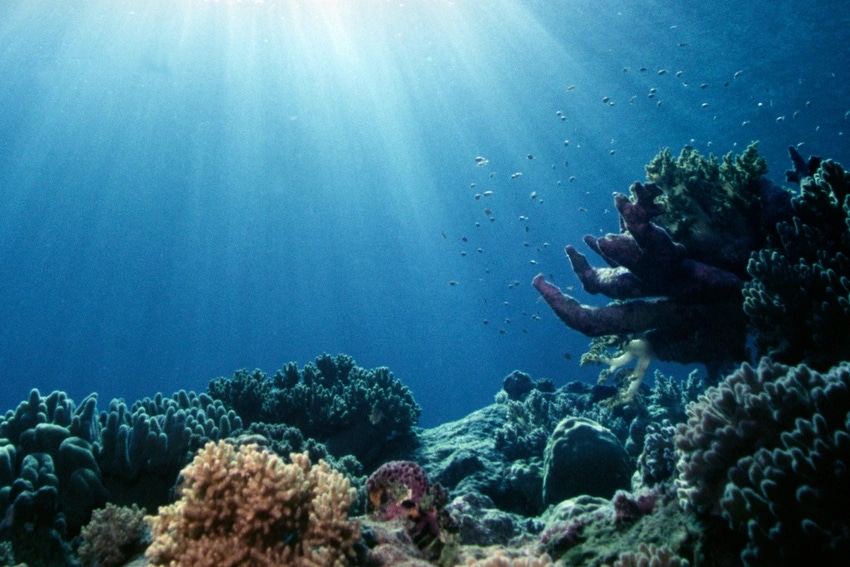Fujitsu Uses AI, Underwater Drones for Ocean Digital Twin
The digital twin is designed to support conservation efforts, providing more accurate insight into underwater ecosystems

Fujitsu has launched a new platform using lidar, AI and underwater drones to create an ocean digital twin, encompassing natural features such as coral reefs and manufactured infrastructure like wind turbines.
Using this digital twin, Fujitsu said researchers will be able to study underwater ecosystems, more accurately predict environmental changes and simulate the possible effects of conservation efforts.

Concept of ocean digital twin technology in relation to achieving SX. Credit: Fujitsu
The tech will be integrated into autonomous underwater vehicles that will be deployed to scan and monitor underwater environments even in difficult conditions. Data collected from satellites will also be used to map underwater life.
“To conserve marine ecosystems and understand the amount of carbon dioxide absorption, it is necessary to acquire high-resolution 3D shape data with a resolution within several centimeters,” Fujitsu said in a statement. “Existing technologies like acoustic sonar, for example, prove insufficient for this task, with resolution limited to about 10 centimeters (3 inches) due to issues such as beam width limitations.”
Fujitsu will also use AI for image enhancement and to correct color and clarify images, enabling more accurate renderings of underwater structures.

Precise 3D shape data of coral reefs using image enhancement AI technology. Credit: Fujitsu
To test the technology’s efficacy, Fujitsu conducted a trial near Ishigaki Island, Japan, alongside the National Maritime Research Institute and the National Institute of Maritime Port and Aviation Technology.
Results from the test showed the successful acquisition of 3D data for mapping coral reefs. Fujitsu said it plans to present the results at the spring 2024 meeting of the Japanese Society of Fisheries Science taking place between March 27 and March 30.
Fujitsu said it plans to expand the targets of its technology to include seaweed to create an ocean digital twin for seaweed beds by 2026.
Fujitsu said government bodies and companies would be able to use this to assess the carbon stored in seaweed beds and support initiatives to conserve and cultivate seaweed beds.
This article was first published in AI Business's sister publication IoT World Today.
About the Author(s)
You May Also Like


.jpg?width=700&auto=webp&quality=80&disable=upscale)
.jpg?width=700&auto=webp&quality=80&disable=upscale)
.jpg?width=700&auto=webp&quality=80&disable=upscale)
.jpg?width=300&auto=webp&quality=80&disable=upscale)
.jpg?width=300&auto=webp&quality=80&disable=upscale)
.jpg?width=300&auto=webp&quality=80&disable=upscale)

.jpg?width=300&auto=webp&quality=80&disable=upscale)